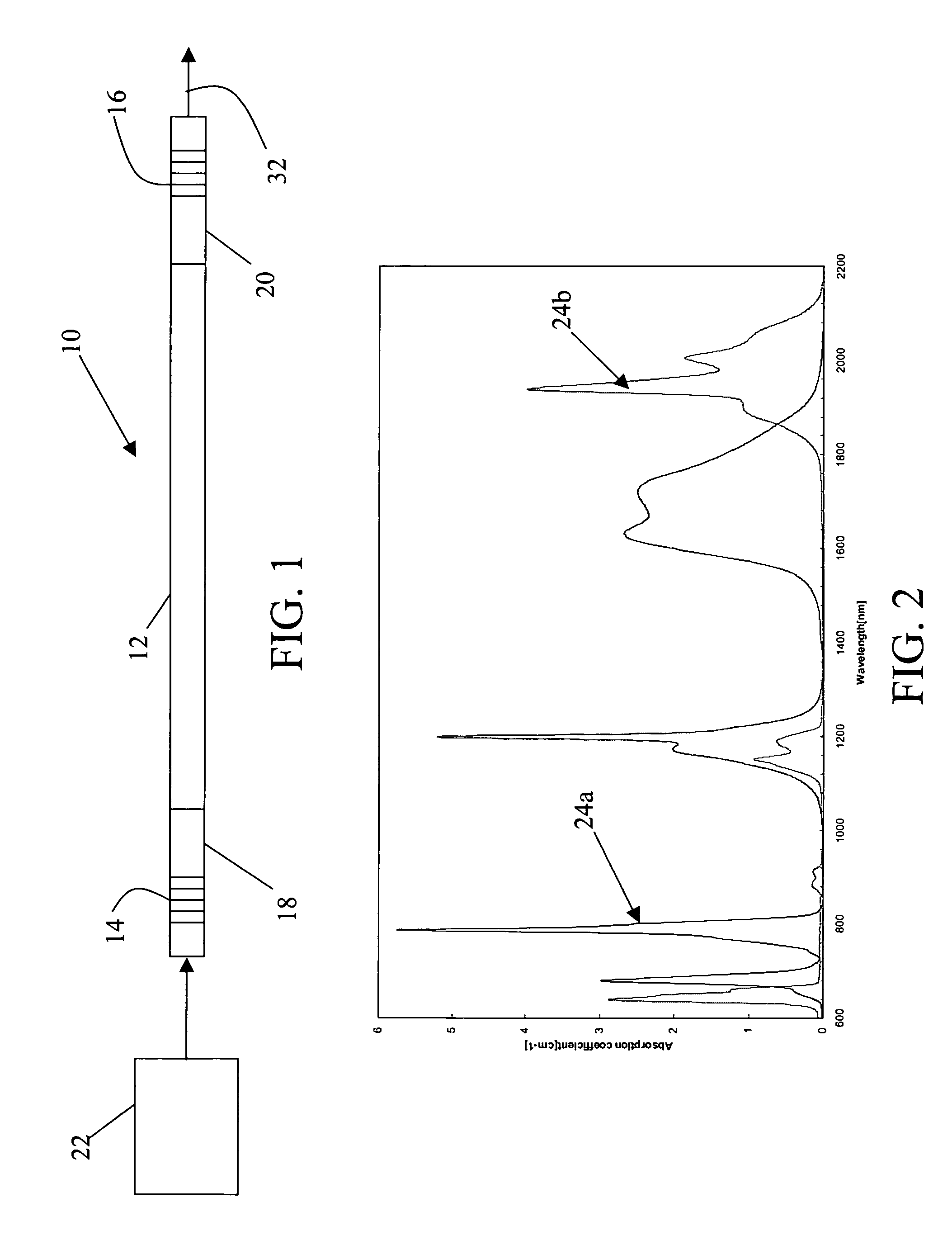Single-frequency narrow linewidth 2 μm fiber laser
a fiber laser and narrow linewidth technology, applied in the field of single-frequency 2 m fiber lasers, can solve the problems of limited single-transverse mode performance of current 2 m fiber laser technology, and achieve the effects of reducing noise, facilitating splicing, and stable single-frequency operation
- Summary
- Abstract
- Description
- Claims
- Application Information
AI Technical Summary
Benefits of technology
Problems solved by technology
Method used
Image
Examples
Embodiment Construction
[0021]The present invention provides a compact single frequency, single-mode 2 μm fiber laser with narrow linewidth, less than 100 kHz and preferably less than 10 kHz. As shown in FIGS. 1 through 4, a 2 μm fiber laser 10 includes a single mode gain fiber 12 formed of a low phonon energy glass host doped with triply ionized rare-earth thulmium or holmium oxide or mixtures thereof. Erbium or ytterbium dopants may also be used to absorb and then transfer pump energy to the active ions. The low phonon energy glass host is selected from either an oxide-based multi-component germanate or tellurite glasses or a fluoride based glass. These host glasses have sufficiently low phonon energy to slow down the multi-phonon relaxation process. Narrowband and broadband fiber gratings 14 and 16, respectively, are formed in sections of passive silica fiber 18 and 20 and fused to the ends of gain fiber 12 to form a resonant cavity that provides the feedback necessary to sustain laser operation. The re...
PUM
| Property | Measurement | Unit |
|---|---|---|
| length | aaaaa | aaaaa |
| center wavelength | aaaaa | aaaaa |
| length | aaaaa | aaaaa |
Abstract
Description
Claims
Application Information
 Login to View More
Login to View More - R&D
- Intellectual Property
- Life Sciences
- Materials
- Tech Scout
- Unparalleled Data Quality
- Higher Quality Content
- 60% Fewer Hallucinations
Browse by: Latest US Patents, China's latest patents, Technical Efficacy Thesaurus, Application Domain, Technology Topic, Popular Technical Reports.
© 2025 PatSnap. All rights reserved.Legal|Privacy policy|Modern Slavery Act Transparency Statement|Sitemap|About US| Contact US: help@patsnap.com



